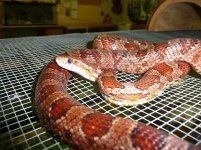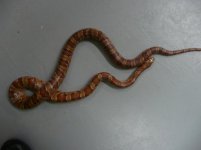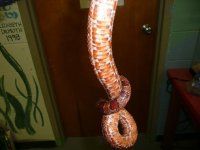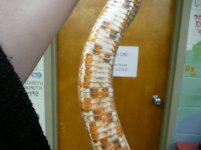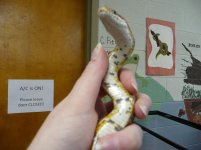paigehi
Teaching Snakes To Read
A student's family had this snake and were having trouble with it, so they've asked me to rehome it and right now it is hanging out with me at school. From the description I thought it was a normal, and indeed from the top it appears that way. However, the back 2/3 of the ventral surface is red, a quality I am more used to seeing in bloodreds. Any ideas? I still need to get the snake sexed, but once I know it's gender, any ideas for a test breeding?
Sorry for the quality of the pictures...snake isn't too used to me yet, though it is very passive and did not try to get away or strike, I've never yet met one that wanted its ventral side photographed!
Sorry for the quality of the pictures...snake isn't too used to me yet, though it is very passive and did not try to get away or strike, I've never yet met one that wanted its ventral side photographed!

